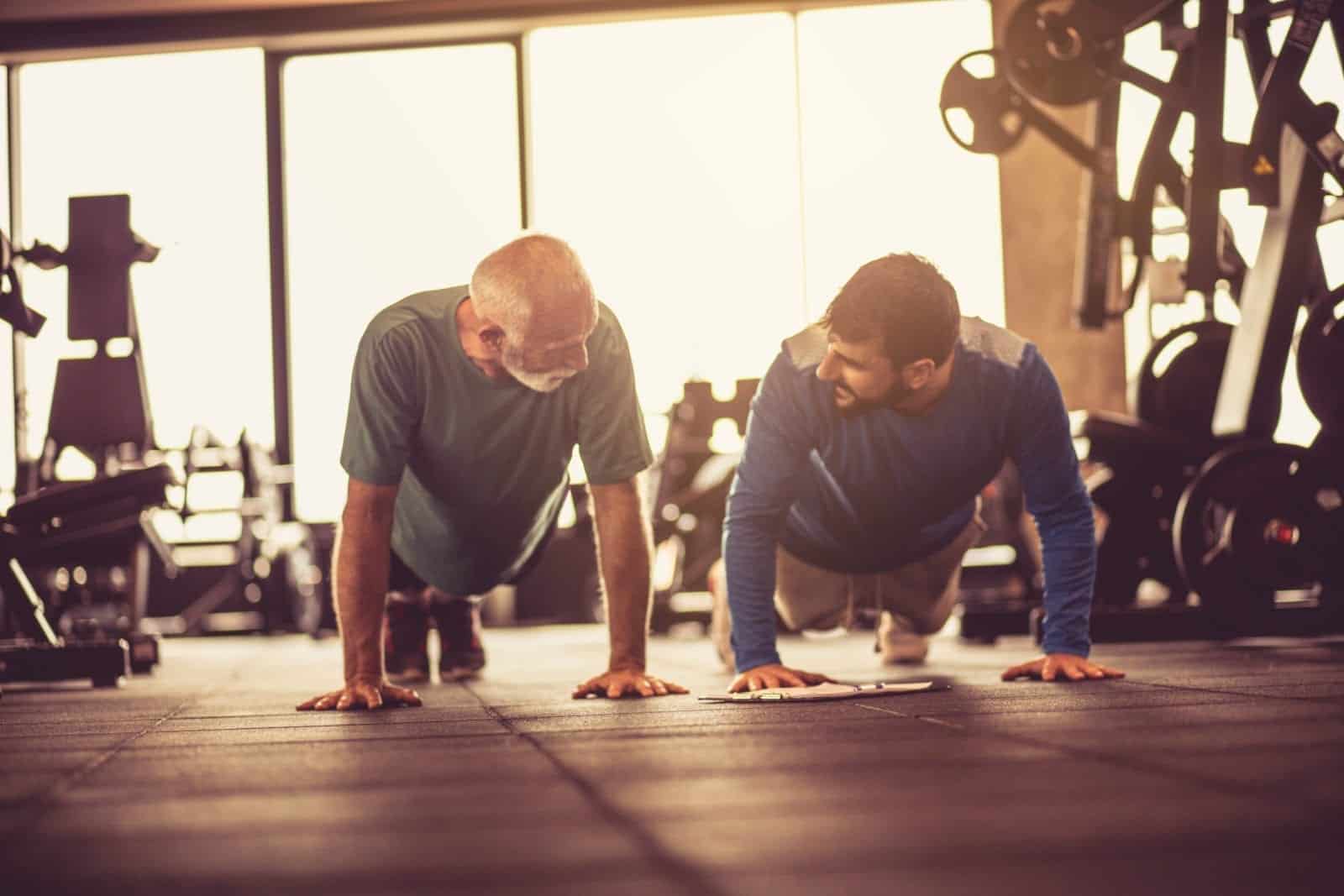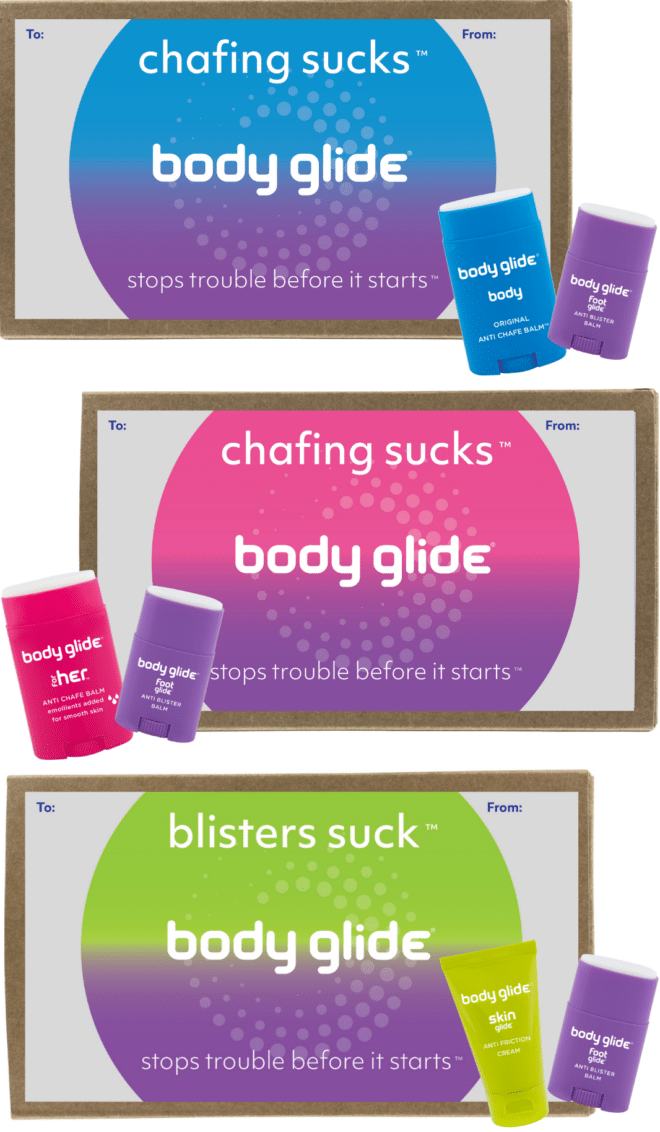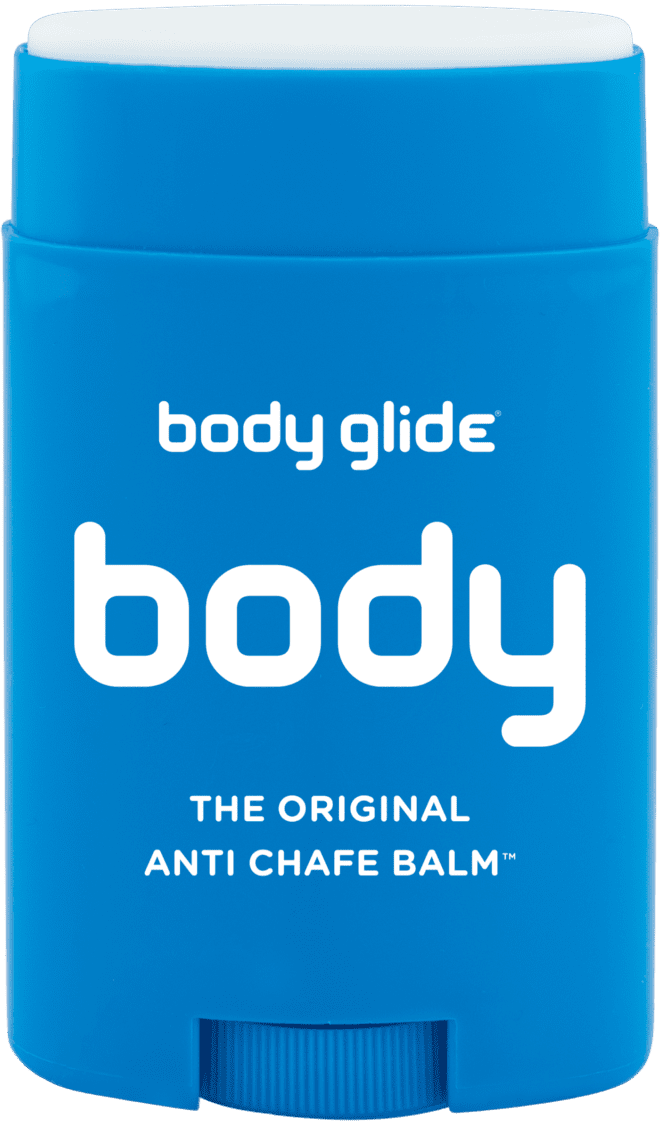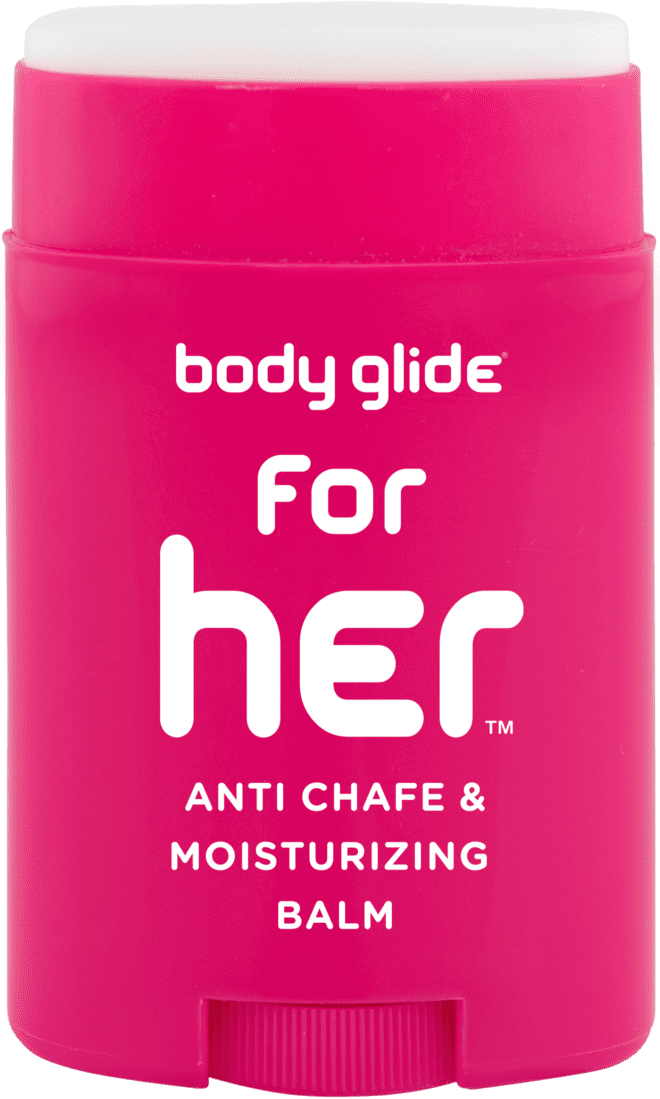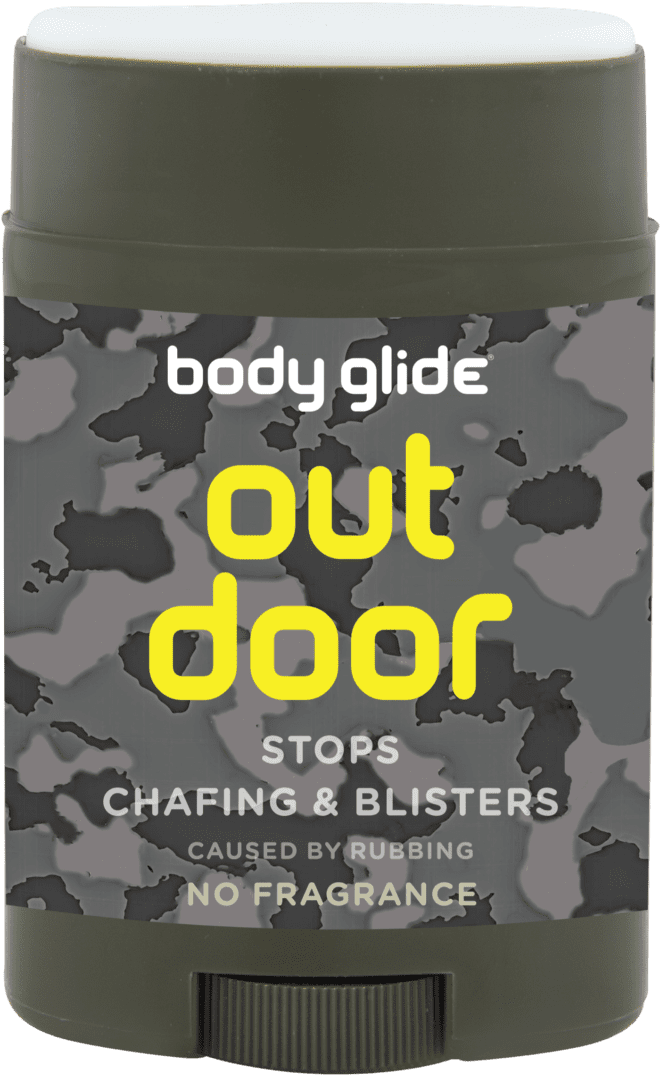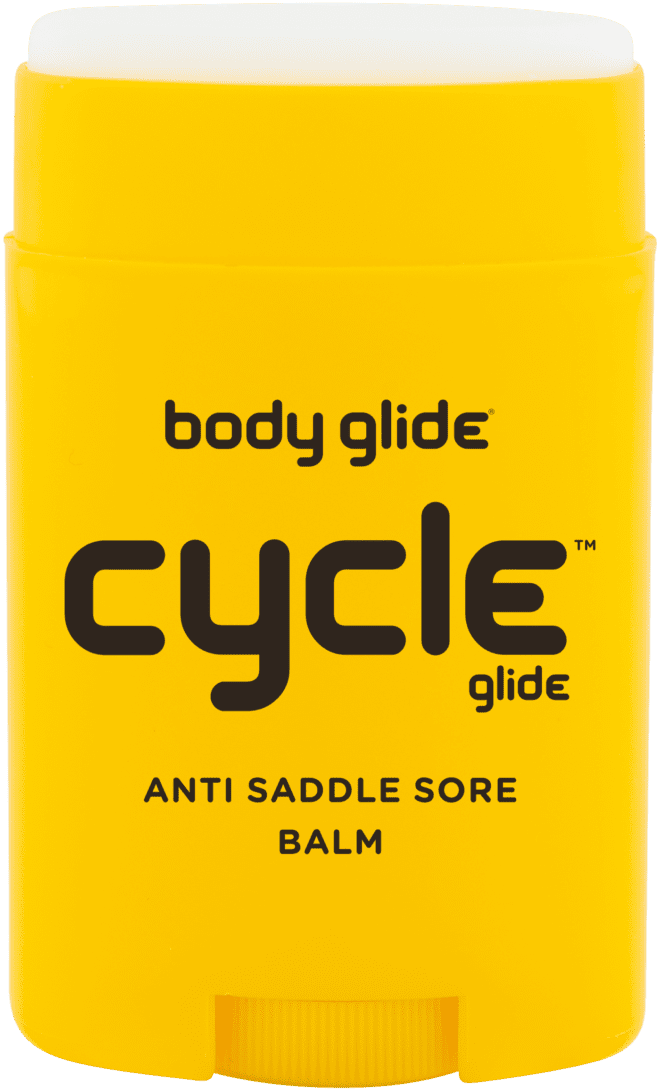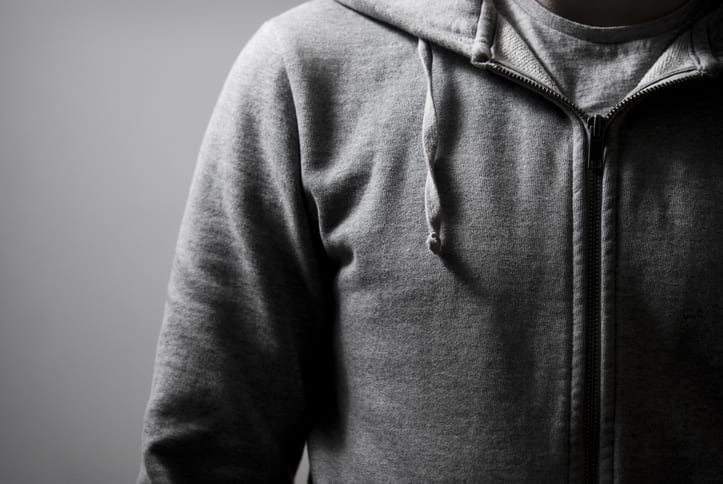Men's Chafing
When you move or exercise, certain parts of your body rub against each other or your clothing. Areas like your chest & nipples, underarms, thighs, buttocks, and feet are all prone to friction, couple this friction with a hot or humid environment or moisture from sweat and these areas will wear down over time causing chafing.
Follow our in-depth guide below to learn what causes chafing, how to prevent and treat the most common forms of chafing in men, and why Body Glide is the perfect solution for any man’s chafing needs. Body Glide anti chafe sticks create an invisible, hypoallergenic barrier derived from plant waxes attaches to the skin surface, allowing it to stay where needed. The sticks repels water and moisture, as it lets skin breathe and sweat escape. Our reputation is founded on dry, dependable, technologically enhanced skincare protection sticks that help prevent rash, chafing, blisters, and raw skin caused by rubbing and friction.
Men's Chafing Guide
Watch Chafing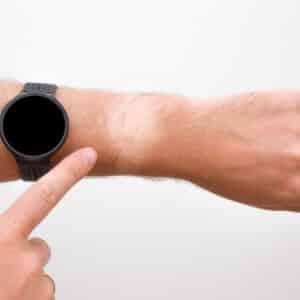
While we all love sun-soaked days, poolside lounging, and outdoor activities, warm weather can also bring about skin issues that are less common during the colder months. One particular concern for many individuals is the dreaded “watch rash” that can develop from wearing fitness trackers, smartwatches, or traditional watches in the heat. Wristbands can trap sweat and salt, leading to discomfort just when you’re trying to enjoy the season. Fortunately, Body Glide anti chafe sticks are here to help you combat those painful skin-chafing symptoms and enjoy a rash-free season.
With the rise of smartwatches, watch rash has become more prevalent. Many smartwatch users have reported developing rashes underneath the watch and its band. These problems are well-documented, and today we’ll explore what watch rash is and discuss some effective remedies.
Why Does Watch Chafing Occur?
Dermatologists identify watch rash as a form of contact dermatitis, which is a common type of eczema. Contact dermatitis occurs when your skin comes into contact with allergens, irritants, or experiences friction.
What Does Watch Chafing Look Like?
If you’ve been experiencing repeated irritation underneath your watch, you may notice the following symptoms:
- Red rash
- Itching
- Dry, cracked, scaly skin
- Bumps and blisters
- Swelling, burning, or tenderness
How To Prevent Watch Chafing?
Here are some strategies to treat and prevent watch rash:
- Clean Your Watch: Regularly clean and sanitize your watch. Sweat can lead to the formation of salt deposits, especially after workouts. Your watch may rub against these deposits, causing rashes. Cleaning and drying your watch can help prevent this.
- Adjust Your Strap: Ensure your watch strap isn’t too tight or too loose. Manufacturers recommend a comfortable fit that allows your watch to rotate around your wrist. Tight straps can damage the skin, while loose ones may cause friction.
- Use Body Glide Anti Chafe Stick: Protect your skin’s outer layer with Body Glide Sticks. These invisible, non-toxic, plant-based products act as moisture barriers, reducing unwanted friction between your skin and your watch.
- Relieve Itching: Avoid scratching or itching affected areas, as this can worsen the rash. Consider using hydrocortisone creams to reduce itching and irritation.
- Consult a Specialist: If your rash persists or worsens, consult a dermatologist. They can provide a conclusive diagnosis and recommend the best treatment for your specific case, which may include antibiotics or steroids for severe cases.
How To Get Rid of Watch Chafing?
Body Glide Anti Chafe Stick are designed to create a dry, water-resistant, and invisible barrier that shields your skin from irritation. They are effective wherever skin is prone to rubbing against clothing, footwear, or even itself! These sticks are formulated specifically to act as a barrier against the effects of friction, making it easy to apply and offering all-day protection from various irritants, including skin-on-skin rubbing, clothing chafing, and the pinching and friction caused by watches and other gear.
One of the most common areas for chafing, underarm or armpit chafing is caused by a combination of friction, dry skin and sweat. This type of chafing is caused by irritation of the sensitive skin between your arms and your torso.
Underarm chafing is common among athletes, overweight individuals, those who work in hot and humid environments, and anyone who does repetitive or strenuous motions for extended periods of time (warehouse & construction workers, chefs, firefighters, etc…). Shaving your underarms is also a potential cause for chafing, as your hair slowly grows back it is coarse in the early stages which can cause irritation.
Why Does Underarm Chafing Occur?
Chafing is a friction-induced skin injury where layers of the skin are rubbed off leaving it red, raw and irritated. Underarm chafing occurs due to the constant and repetitive motion of arms moving against the torso, as well as the moisture and sweat that tends to build up in this area. This combination of friction, moisture and clothing can cause the skin under your arms and in your armpit to become irritated, chafed and sore.
What Does Underarm Chafing Look Like?
Underarm chafing can range from irritated, dried skin to full on blistering and rash like symptoms.You may also experience:
- Sore, tender, & red skin
- Pain ranging from discomfort to intense stinging pain
- Scabbing or a chapped dry texture between your underarms and torso
How To Prevent Underarm Chafing?
Keep underarm chafing at bay by applying a moisture-rich barrier between you and your skin or clothing. Body Glide® anti chafe sticks are specially formulated to allow your skin to move freely over itself or your clothing, reducing friction and eliminating chafing. Wearing the right clothing also helps. Opt for moisture wicking workout gear or undergarments that draw sweat away from your body and allowing it to evaporate without leaving salty residue on your skin. Keep your skin clean and moisturized. Proper cleaning habits can keep your skin free of debris and healthy.
How To Get Rid of Underarm Chafing?
If you are reading our guide a little too late, it may be time to treat and heal your underarm chafing, here’s what we recommend:
Underarm Chafing Treatment
- Gently scrub your chafed skin to cleanse and remove any debris from the affected area
- Avoid harsh soaps or chemicals that might aggravate the affected area.
- Use a moisture rich ointment over the affected area
- Allow the area to breathe and wear clothing that will not irritate or rub against the affected area.
- Mild cases of underarm chafing should clear up within a few days but due to the potential of yeast and bacteria buildup in this area see a doctor or medical professional if your symptoms worsen or if you see no improvement to the affected area
Groin Chafing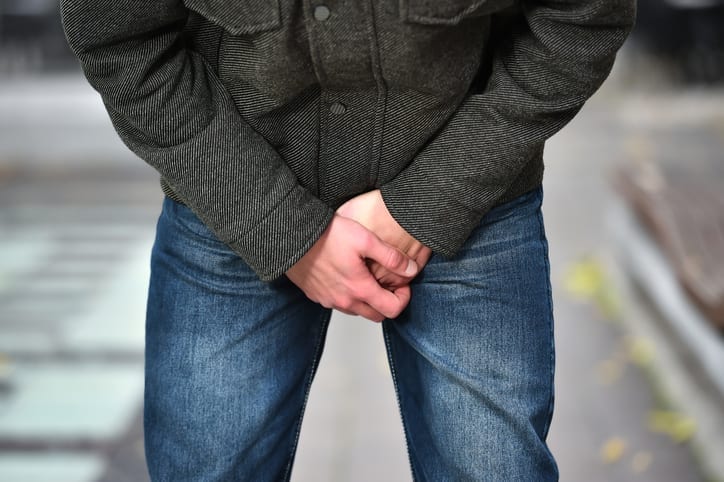
Along with areas like your nipples and underarms, groin chafing is caused by a combination of friction and moisture. This type of chafing is caused by irritation of the very sensitive skin between your groin and thighs. Groin chafing is common among runners, surfers, bikers, overweight individuals, those who work in hot and humid environments, as well as many sports enthusiasts.
However, while the most common cause for groin chafing is due to repetitive motions like running or exercise, irritation can develop in this area due to other conditions not related to exercise. Skin with a crusty border may indicate a fungus infection also known as jock-itch. A bacterial infection known as folliculitis may develop in some individuals that is also often mistaken for chafing. As a general rule if the skin irritation is persistent, recurring, or if you notice drainage or persistent itching coming from the affected area, seek help from a medical professional right away.
Why Does Groin Chafing Occur?
Due to the sensitive skin in this area groin chafing can occur for a myriad of reasons:
- A build-up of sweat after exercise
- Sand in your swimming gear
- Excess rubbing to the area such as through exercise or sex
- Soaps, shower gels, & shampoos
- Disinfectants, antiseptics, and ointments
- New underwear
- Laundry detergent
- STD
- Jock-itch
What Does Groin Chafing Look Like?
Groin chafing from exercise presents itself in mild cases as red skin abrasions in areas where the skin has been repeatedly worn down to excessive friction and moisture. It may be most noticeable in the creases between your inner thigh and groin, as well as along the scrotum and penis.
How to Prevent Groin Chafing?
Preparation is the most important way to prevent groin chafing.
- Underwear
- Wear underwear that allows air to circulate around the groin. Avoid natural fabrics like cotton that tend to hold moisture for long periods of time. Instead, choose a more modern synthetic material that will draw moisture away from areas that are prone to sweat.
- Lubricate
- Keeping your chafe-prone areas lubricated will help reduce friction and irritation. Body Glide® products are recommended the world over. Goes on clear, its non-greasy anti-friction formula provides a breathable barrier on the skin protecting it from irritation and friction.
- Don’t shave
- This may sound an odd solution, but hair can act as a natural barrier between skin, wick moisture and help air to circulate. If you shave your body hair, then this could be a factor in the cause of your chafing.
How to Treat Groin Chafing?
If you are reading our guide a little too late, it may be time to treat and heal your groin chafing, here’s what we recommend.
- Ease some of the irritation by using a cold compress or ice pack on the affected area.
- Gently scrub your chafed skin to cleanse and remove any debris or sweat from the affected area
- Avoid harsh soaps or chemicals that might aggravate the affected area.
- Use a moisture rich ointment over the affected area
- Allow the area to breathe and wear clothing that will not irritate or rub against the affected area.
- Mild cases of groin chafing should clear up within a few days but due to the potential of yeast and bacteria buildup in this area see a doctor or medical professional if your symptoms worsen or if you see no improvement to the affected area
*Chafing of the groin can also be mistaken for other types of skin irritations like jock-itch, or STDs that may require antibiotics or medicine. Consult a medical or sexual health professional if your irritation begins to worsen or become more painful.
Ball Chafing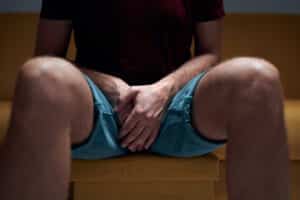
Ball chafing, an uncomfortable and often embarrassing issue, can affect men during various activities, causing irritation and discomfort. Whether you’re an athlete, a fitness enthusiast, or just going about your daily routine, chafing in the delicate groin area can be a significant nuisance. In this article, we’ll explore the causes of ball chafing, ways to prevent it, and introduce two powerful allies in your battle against discomfort: Body Glide Anti-Chafing Stick and SkinGlide.
By understanding the causes, risk factors, and adopting preventive measures, individuals can effectively manage and prevent ball chafing, ensuring greater comfort in daily activities and physical pursuits.
Why Does Ball Chafing Occur?
Ball chafing, much like chafing in other areas, is primarily caused by friction and moisture. The delicate skin in the groin area can experience irritation when constant rubbing occurs, whether it’s due to exercise, hot and humid conditions, or ill-fitting clothing. The combination of friction and moisture creates a perfect storm for discomfort and chafing.
What Does Ball Chafing Look Like?
Ball chafing, also known as chafing in the groin area, can present with various visual and sensory symptoms. The appearance of ball chafing may include:
- Redness: The affected area may appear reddened or flushed due to irritation.
- Inflammation: Swelling and inflammation can occur in response to constant friction and rubbing.
- Skin Irritation: The skin in the groin region may become irritated, leading to discomfort and sensitivity.
- Dry or Flaky Skin: Chafed skin may become dry, and in some cases, it may peel or flake.
- Burning Sensation: Individuals experiencing ball chafing often report a burning or stinging sensation in the affected area.
- Pain or Discomfort: Chafing can cause varying degrees of pain, ranging from mild discomfort to more intense sensations.
- Possible Blisters: In more severe cases of chafing, blisters may form as a result of the skin’s response to prolonged friction and irritation.
It’s important to note that the severity of symptoms can vary from person to person and may depend on factors such as the duration of friction, moisture levels, and individual skin sensitivity. If you notice persistent or worsening symptoms, it’s advisable to take steps to address the chafing and, if necessary, seek medical advice for proper evaluation and treatment.
How to Prevent Ball Chafing?
Preventing ball chafing is essential for maintaining comfort and confidence. Here are effective ways to keep chafing at bay:
- Lubricate with Body Glide Anti-Chafing Stick: A specially formulated anti-chafing stick like Body Glide provides a protective barrier that reduces friction and prevents chafing. Simply apply the stick directly to the areas prone to chafing, such as the inner thighs and groin. Body Glide is non-greasy, easy to apply, and long-lasting, ensuring you stay comfortable throughout your activities.
- Stay Dry with SkinGlide: SkinGlide, another exceptional product from Body Glide, is designed to keep your skin dry and chafe-free. This anti-chafing and anti-blister sticks is perfect for the groin area, providing an invisible, non-greasy layer that guards against friction and moisture. With SkinGlide, you can confidently move through your day without the worry of discomfort.
- Choose Moisture-Wicking Underwear: Opt for moisture-wicking underwear made from breathable materials to keep the groin area dry and reduce the risk of chafing.
- Wear Properly Fitted Clothing: Avoid tight-fitting clothing that can contribute to friction in the groin area. Choose well-fitted, breathable attire to minimize the risk of chafing.
How to Treat Ball Chafing?
If you find yourself dealing with ball chafing, here are steps to alleviate discomfort and promote healing:
- Clean the Affected Area: Gently clean the irritated area with mild soap and water. Pat the area dry with a clean towel.
- Apply Body Glide Anti-Chafing Stick or SkinGlide: Once the area is dry, apply Body Glide Anti-Chafing Stick or SkinGlide to create a protective barrier and reduce friction.
- Wear Loose-Fitting Clothing: Opt for loose-fitting, breathable clothing to allow the irritated skin to breathe and heal.
- Avoid Activities that Aggravate Chafing: Temporarily refrain from activities that may worsen chafing, giving your skin time to recover.
- Seek Medical Advice if Needed: If the chafing persists or worsens, consult with a healthcare professional for further guidance and treatment options.
By incorporating Body Glide Anti-Chafing Stick and SkinGlide into your daily routine, you can confidently prevent and address ball chafing, ensuring a comfortable and irritation-free experience in any activity.
Butt Chafing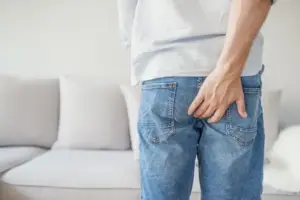
The easiest way to think about butt chafing is that it is similar to a rash, like diaper rash that many babies experience. It is a redness of the skin that forms because of constant friction back and forth between two spaces. In this case, it happens to be the space between your butt cheeks or along the bottom portion of your butt where it meets your upper leg or thigh.
Why Does Butt Chafing Occur?
Often referred to as monkey butt or saddle sores, butt chafing occurs most often in bicycle riders. It can also affect anyone in hot or humid environments during work or exercise activities, as well as those who are overweight.
What Does Butt Chafing Look Like?
Butt chafing often looks and feels like a bad case of sunburn or in more extreme cases road rash. Depending onhow deep the wound is, butt chafing may turn into sores or even scab from the cracked and broken skin on your buttocks.
How to Prevent Butt Chafing
- Lubricate
- Preventing friction from occurring is the first step in preventing butt chafing. Athletes and weekend warriors around the world turn to Body Glide® anti chafe sticks to prevent a gnarly case of monkey butt from flaring up after a long bike ride or hike. Cycle Glide® sticks works great for bikers looking to avoid saddle sores, while Body Glide®s original product is perfect to use in any situation where chafing might be a problem. Simply rub some on in your problem areas and go! Its that easy to prevent chafing when you use Body Glide® sticks.
- Cotton is rotten
- Find underwear made of synthetic materials that help keep moisture away from sensitive areas that not only cause butt chafe but can make a bad case of butt chafe worse. A synthetic material that wicks moisture away from hot spots and problem areas makes it easier to stay dry and thus reduces redness and irritation in the buttocks.
- Size does matter
- A pair of underwear that is too small will dig into your butt crack and thighs and not allow air to flow through. Too baggy of underwear will bunch up in areas as well as ride up your backside giving you a wedgie and a bad case of monkey butt after. Make sure your underwear is comfortable and right in that Goldilocks zone between too tight and too loose. You want it to be just right.
How to Get Rid of Butt Chafing?
Prevention is the best cure but if you made it this far you may need to treat that case of butt chafing so you can get back out on the trails or in the saddle.
Butt Chafing Treatment
- To allow your body to completely heal, take a break from the activity that caused the chafing in the first place. (Bikers may also consider adjusting or altering their riding style or type of saddle they use. Poor seating position or an improperly sized saddle are major culprits in butt chafing.)
- Try easing some of the inflammation and pain by using a cold compress or ice pack on the affected area.
- If you have broken skin or sores apply antibiotic ointments to the affected areas.
- Allow the affected area to “breathe” by avoiding clothing that is tight or constricting.
Feet Chafing and Blisters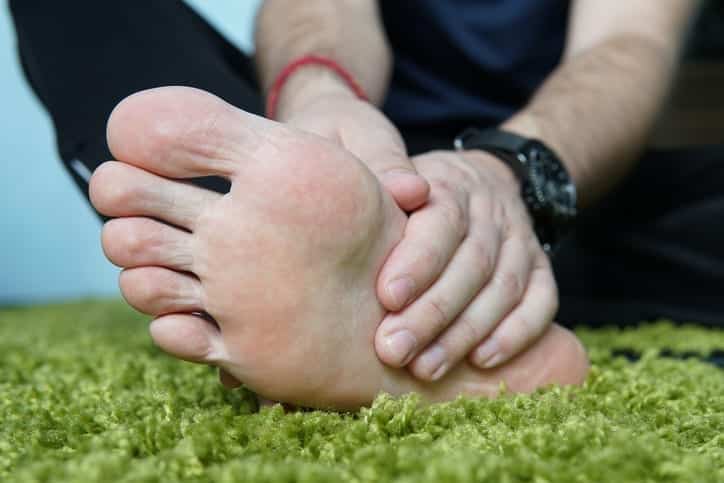
A blister is a small pocket of fluid that forms on your feet either due to excessive walking, exercise or improperly fitting shoes.
Why Do Foot Blisters Occur?
Blisters, just like chafing occur due to two factors: friction and moisture. In areas known as hot spots, sections of your foot that constantly rub against your shoe or another area of skin, friction and moisture from your sweat build up then team up to slowly traumatize your skin. The constant pressure and irritation is what forms this blister or chafing on your foot.
How To Prevent Foot Blisters?
The easiest way to prevent foot blisters is to plan ahead & be prepared.
- Lubricate
- Using a lubricating substance on your foot like Foot Glide® stick will help prevent hot spots from occurring keeping you blister and pain-free all day. Just one application of this stick is all it takes to keep blisters and chafing on your feet at bay. For those that compete in long events like marathons or triathlons, Foot Glide® sticks pervent hot-spots that normally would have to be wrapped with a blister bandage, keeping you on your feet longer and pain-free.
- Right Gear
- Socks that are seam free and wick away moisture are your best friend if you have issues with foot blisters or chafing.
- Properly sized and fitted shoes are your best friend and make your running life immensely easier. Improperly sized shoes are the number one contributor to hot spots and by extension- blisters and chafing
How To Get Rid of Foot Blisters?
If you are looking to heal your foot blisters you are in the right place.
Foot Blister Treatment
- Clean the area with mild soap and water and allow it to dry.
- Cover the blister with a bandage.
- You may want to make a donut area around the blister to protect it further, cutting strips of a product like moleskin makes it easy to protect it.
- Check your footwear and switch to shoes or sandals that won’t rub against the blister area.
- Use this as a chance to avoid getting a blister in the future. Analyze what you did (or didn’t do) that led to getting the blister then seek out proper attire and equipment to prevent it from happening again.
In severe cases, a blister may be quite painful and could even prohibit you from wearing any shoes at all. If you feel the need to drain the blister, consider contacting a health professional. If you are unable to and feel you really need to drain it (which should be your last resort!) here’s how to do it safely.
- Wash your hands and the blister with warm water and soap.
- Swab the blister and area with an antiseptic like iodine or rubbing alcohol.
- Sterilize a clean and sharp needle by wiping it with an antiseptic.
- Gently puncture the blister in a few spots near the blister edge. Let the fluid drain (applying very gentle pressure if necessary) and do not remove the overlying skin.
- Immediately apply an antibiotic ointment to the area and cover with a bandage or gauze.
- Consider avoiding the activity that caused the blister in the first place – in order to allow it to heal properly.
- After several days, you can cut away the dead skin using sterilized scissors and tweezers.
- Apply more ointment and a bandage or gauze.
- Seek medical advice immediately if you notice redness, pus, warm or inflamed skin or increasing pain as these could all be signs of a serious infection.

